Have you been thinking about creating the perfect outdoor seating area? If so, finding the right height for your garden bench is essential in creating an inviting and comfortable atmosphere. Finding the right height can help create a cozy atmosphere and ensure that people can comfortably enjoy their time outside in your garden. It’s important to consider both aesthetics as well as comfort when deciding on the right height for a garden bench. This blog post will explore good heights for garden benches, giving you all of the information you need to set up an ideal seating area.
Types of garden furniture
Garden furniture is an essential component of any outdoor living space. There are many different types available to suit all budgets and styles, from classic teak wood chairs and tables to modern metal designs.

For a sleek and contemporary look, metal garden furniture is the perfect choice. When it comes to this type of furniture, aluminum is the most commonly used material. It offers a combination of lightweight construction and exceptional strength, ensuring durability over time. Steel and wrought iron are also popular options, although they may require occasional maintenance to prevent rusting. With their intricate designs and modern aesthetic, metal garden furniture can transform any outdoor space into a stylish haven.
Finally, if you’re searching for an affordable and low-maintenance option, plastic garden furniture is an excellent choice. With a wide range of color options and styles available, you can easily add a vibrant touch to your garden. Additionally, these chairs and tables are not only easy to clean but also perfect for families with children or pets, as they are highly durable and resistant to wear and tear. Enjoy a worry-free and colorful outdoor space with plastic garden furniture!
No matter what type of outdoor living space you have, there’s sure to be a type of garden furniture that fits your needs. Whether it’s a classic wooden set or a modern metal design, find the right furniture to help you make the most of your outdoor area. With the right kind of garden furniture, you can enjoy al fresco dining, relaxing with friends or just taking in the fresh air [1].
What dimensions should garden furniture have?

By taking into account the size, style and material of your furniture, you can ensure that your garden is a comfortable and inviting outdoor space that you can enjoy for years to come. With the correct dimensions in place, you don’t have to worry about things feeling cramped or overcrowded. Moreover, choosing pieces with weather-resistant materials will help you preserve your furniture for longer. With a little bit of research and careful consideration, you can create the perfect outdoor oasis to enjoy with friends and family!
In addition to considering the dimensions of garden furniture, it is also important to take into account how much maintenance each piece requires. For instance, wooden furniture may require more upkeep such as polishing or staining. On the other hand, metal furniture may need less work but will still require occasional cleaning and rust-proofing. Furthermore, if you are looking for furniture that can be easily moved around or rearranged, lightweight materials like plastic or aluminum may be a better option.
Choosing the right seating group for your garden
When it comes to choosing the right seating group for your garden, there are a few things you should consider. Firstly, the size of your garden and how much space is available. If your garden is quite small, you may want to opt for something more compact such as bistro furniture or a bench with two chairs. For larger gardens, you have more options such as garden furniture sets or even outdoor sofas and armchairs.
Additionally, the type of material your seating group is made out of is important. Wooden furniture tends to be a popular choice for gardens due to its classic look, durability and easy maintenance. Alternatively, you may opt for metal furniture which is more lightweight and easier to move around. Wicker furniture is also popular for its aesthetic appeal and versatility.
Once you have decided on the type of seating group, it’s time to choose the style. Do you want something more traditional or modern? Are vibrant colors important to you or would you prefer a neutral palette? Consider how your furniture will match with other elements in your garden such as plants and flowers. There are many options available, so make sure you take the time to find one that fits your garden perfectly.
The best material for garden bench
Plastic and rattan
Plastic and rattan are two popular materials used for garden benches. Both materials are lightweight, durable, and easy to maintain. Plastic is a great choice if you want a low-maintenance material that won’t require much upkeep. It’s also available in many colors and styles to fit any aesthetic. Rattan is a bit more expensive but also tends to last longer than many other materials. It’s an excellent choice if you want a classic, timeless look for your garden bench.
Wood
Wood is another popular material used for garden benches. It has a natural look and feel that is hard to replicate with any other material. Many woods are also very durable, making them suitable for outdoor use. However, wood does require more upkeep than other materials, as it must be regularly stained or sealed to protect it from moisture and UV damage.
Concrete
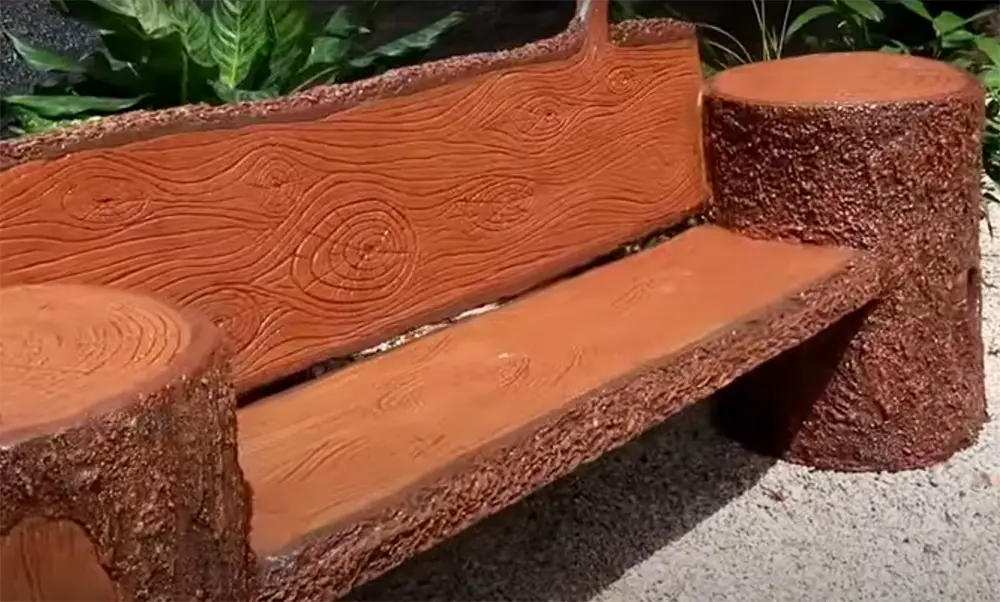
Concrete is another material that is gaining popularity for garden benches. It is strong, durable, and resistant to the elements. However, it can be quite heavy and may require professional installation if you don’t have the right tools. Additionally, it can be tricky to customize the look of a concrete bench.
Metal
Metal benches are popular for their modern and industrial look. They also tend to be lightweight and easy to move around if needed. However, they may require more maintenance than other materials as they can rust over time. Additionally, metal benches can be quite expensive compared to some of the other materials mentioned here.
Stone
Stone benches are a great choice if you want something that will last for many years without needing much maintenance. They also have a classic and timeless look that can be easily incorporated into any garden design. However, they can be quite expensive and may require professional installation. Additionally, the stone is very heavy and difficult to move around once installed.
Build-quality and Longevity of garden benches
Dimensions
To ensure the build quality and longevity of a garden bench, it is crucial to pay attention to its dimensions. The width of the seat should be at least 45 cm, providing ample space for individuals to sit comfortably. When determining the length of the bench, consider accommodating the number of people you plan to host, with a recommended range of 1m to 2m. This allows for flexibility in seating arrangements, whether it’s a cozy gathering or a larger group.
Care and Storage
When the garden bench is not in use, it is crucial to store it in a dry place or cover it with a weather-proof cover. This simple yet effective precaution will shield the bench from the harshest weather conditions, ensuring its longevity for years to come.
Moreover, to maintain its pristine condition, it is highly recommended to regularly clean the bench with mild soap and warm water. This practice helps prevent the buildup of dirt and grime that may accumulate over time.
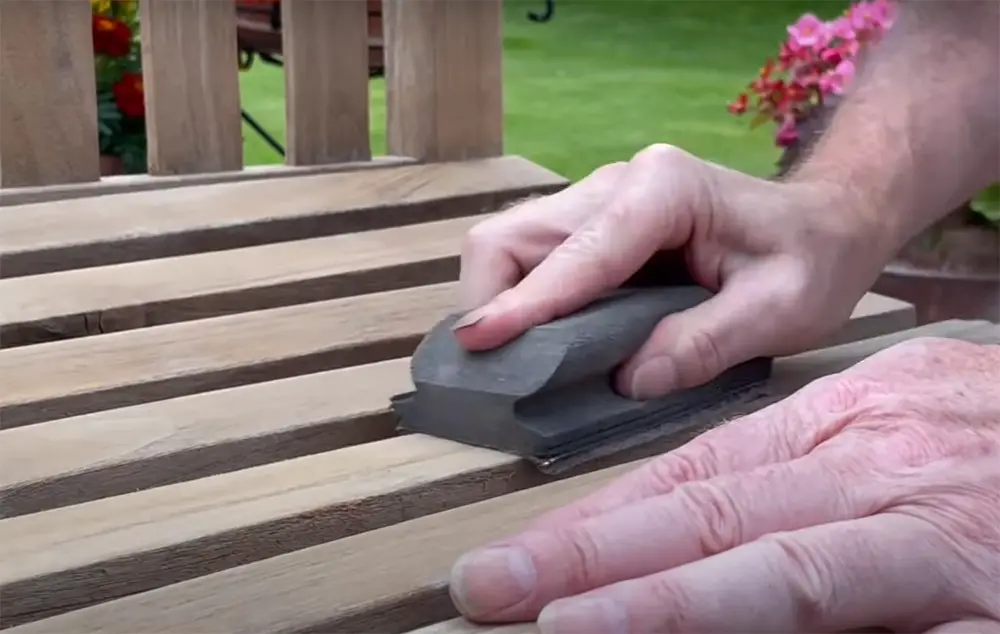
In addition to regular cleaning, applying a protective coating, such as oil or varnish, to the bench’s surface is highly advised. This protective layer acts as a barrier against moisture and other elements that may potentially damage the bench. To guarantee the bench’s optimal protection, it is recommended to apply the protective coating once every year. By doing so, you can further enhance its resistance to wear and tear, ensuring its beauty and functionality for many seasons to come.
Finally, make sure to inspect the garden bench at least once a month for signs of wear and tear, such as cracks or splits in the wood. If any damage is found, make sure to repair it immediately to prevent further damage and ensure its longevity.
Cleaning
Cleaning of the garden bench is an important part of bench care. To clean the bench, use a mild soap and warm water solution to remove dirt and grime. Avoid using abrasive scrubbing pads or harsh cleaners as these may damage the surface of the bench over time. After cleaning, make sure to wipe down the bench with a damp cloth for a longer-lasting shine.
Additionally, you can also use specialized wood cleaners to help restore the bench’s natural beauty and protection against the elements. These products are specially formulated to nourish and protect wood surfaces, leaving them looking glossy and fresh.
By following these simple cleaning tips, you can keep your garden bench well-maintained for years to come. Not only will it look great, but it will also provide a safe space to relax and enjoy outdoor moments.
Grinding and Sanding
To further protect the bench from wear and tear, it is recommended to use a power sander or grinding machine along the edges of the wood. This will create smooth, rounded edges that look great and are also more resistant to splintering. Additionally, this process will also help preserve the natural beauty of the wood by preventing chipping or cracking.
As a final step, sand the entire bench using fine-grain sandpaper to remove any rough spots and create a smooth finish. This will provide an extra layer of protection against moisture and other elements, ensuring its longevity for many seasons to come.
By following these simple steps, you can help ensure that your garden bench looks great and lasts for years to come. So make sure to take the time to properly care for your outdoor sanctuary and enjoy its beauty for many years to come.
Dying
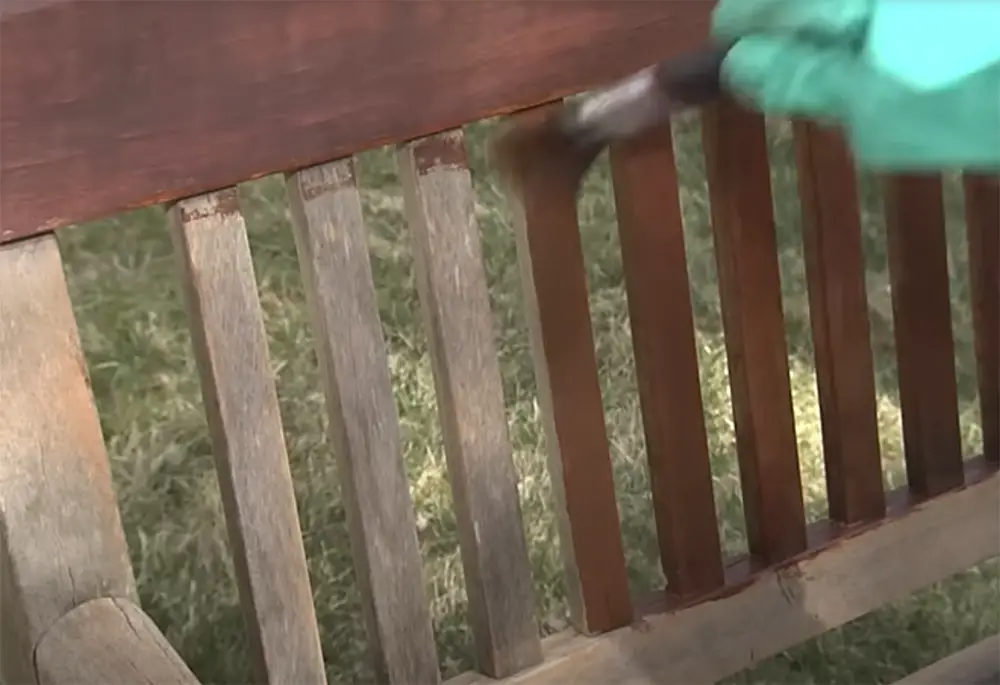
To further enhance the look and longevity of a garden bench, an optional step is to apply a coat of wood dye. This process will give the bench a vibrant and inviting finish that will transform it into an aesthetic masterpiece. When choosing a color for your bench, make sure to select one that complements the natural hues of your outdoor space. Additionally, consider applying multiple layers of dye for a more intense and longer-lasting color.
Once the desired color is achieved, it is recommended to finish the bench with a protective sealant. This will help protect the wood from moisture and other elements while preserving its natural beauty for years to come. With these simple steps, you can give your garden bench a fresh new look that will be sure to draw admiring glances and compliments.
Sustainability
Additionally, if you are building the bench yourself, make sure to use sustainable building practices such as using wood glue instead of screws and nails. This will help reduce waste and ensure that your garden bench is built with respect for the environment.
CO2 balance
To ensure a carbon-neutral impact, it is highly advised to purchase an offset for the CO2 emissions generated during the production of your garden bench. This will help reduce the overall environmental footprint and allow you to enjoy your outdoor sanctuary without guilt or worry.
By considering these aspects when purchasing or building a garden bench, you can create an environmentally friendly space that can be enjoyed for years to come. Not only will you have the peace of mind of knowing that your bench is sustainable, but you can also enjoy all the benefits of an aesthetically pleasing and comfortable outdoor space.
Safety
It is always important to consider safety when purchasing or building a garden bench. If building yourself, make sure to properly secure each component using strong screws and nails. Additionally, check the bench regularly for signs of wear or damage that may cause injury.
When purchasing a pre-built bench, make sure to look for one with safety features such as guardrails or armrests. This will ensure that you and your family have the best possible experience when enjoying outdoor moments in comfort and security.
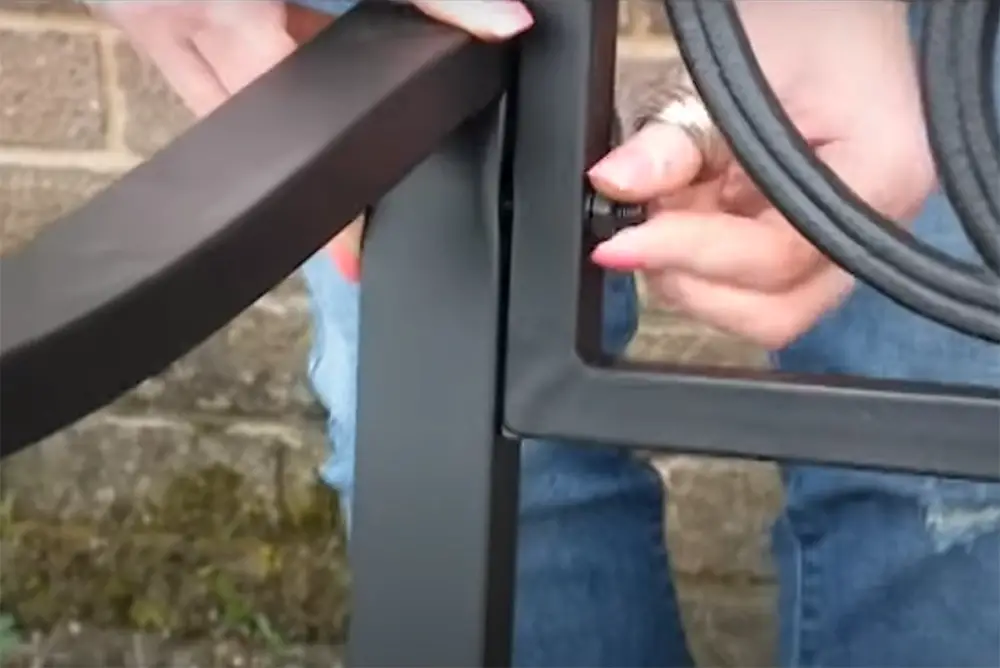
FAQ
How high should a garden bench be?
Generally, garden benches should be between 16 and 20 inches high. This height works best for most people, allowing them to easily sit down on the bench and stand up again without difficulty. Additionally, this height ensures a comfortable seating position that makes it easy to enjoy your outdoor space.
What kind of material is best for a garden bench?
The best material for a garden bench depends on the particular environment and use. For areas that experience severe weather, metal benches are often the most durable choice. Wood is also a great option as it is naturally resistant to weathering and can be treated with a sealant to protect against water damage. Finally, plastic or synthetic materials are low-maintenance and may be ideal for patio seating in protected areas.
What is the best way to maintain a garden bench?
The best way to maintain a garden bench depends on its material and exposure to the elements. For metal benches, it is important to periodically inspect for rust or corrosion and apply protective coatings when needed. For wood, a regular cleaning with a soft brush or cloth will help keep it looking its best while oiling or applying sealants can help protect against mold and decay. Plastic or synthetic benches should be cleaned regularly with a mild detergent and then rinsed off to remove dirt and debris. For all materials, make sure the bench is kept in a dry space when not in use. This will keep it looking great for years to come!
Useful Video: Matts Garden : Bench Height
Conclusion Paragraph
In conclusion, a good height for a garden bench is a subjective choice that depends on the size of the space, the size and number of people using it, as well as personal preference. However, most experts agree that the ideal height for a garden bench should be between 18 to 20 inches from the ground. This allows for comfortable seating while sitting upright and provides enough distance between you and your garden plants. It also prevents users from having to bend down too much when reaching out for plants or tending to them. Ultimately, choosing the right height should be based on what works best for you and your garden.
References:
- https://porchandpatio.net/types-of-patio-furniture/
- https://betterwood.co/guidance/outdoor-furniture/dimension/





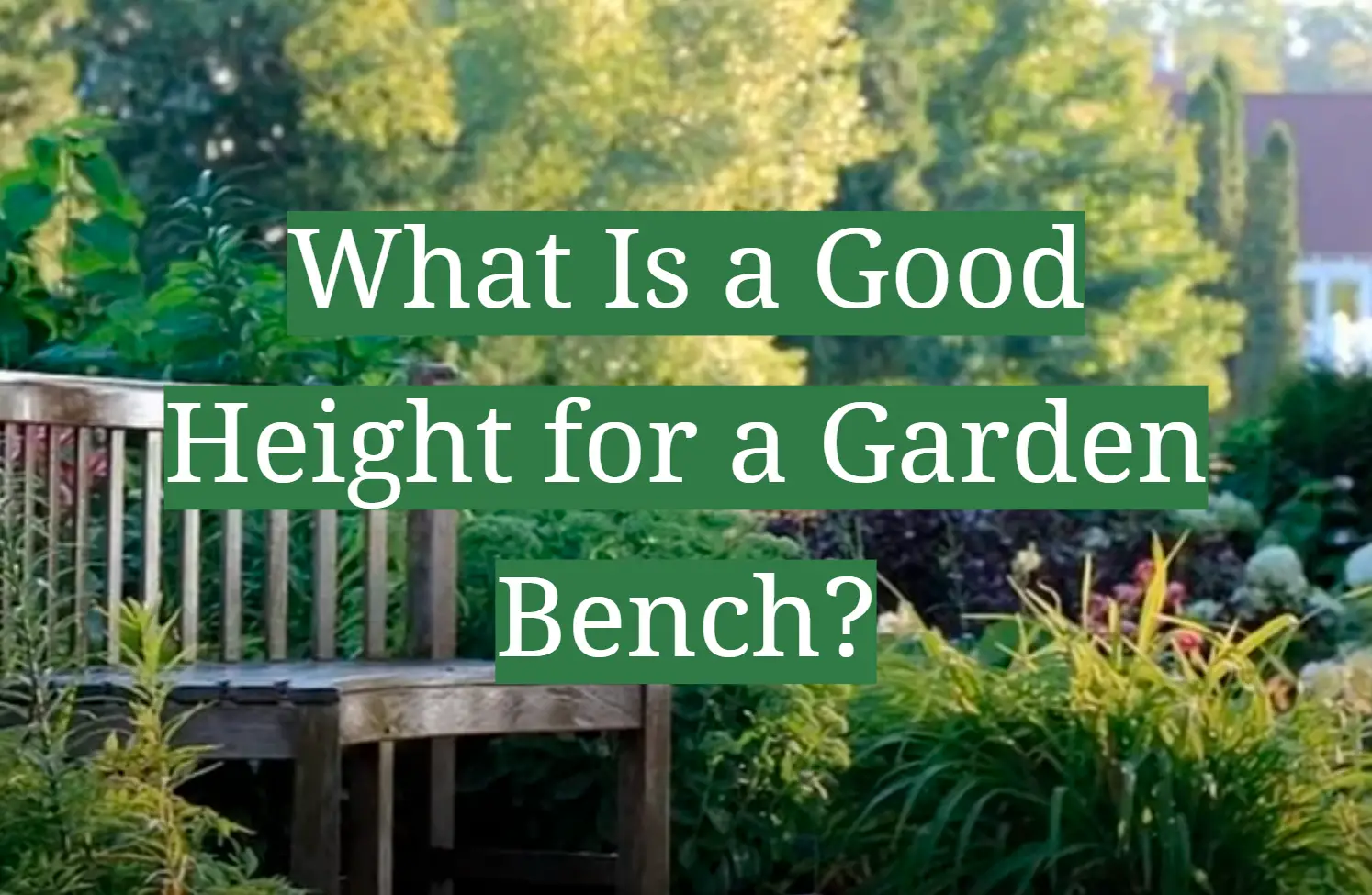




Leave a Reply
View Comments